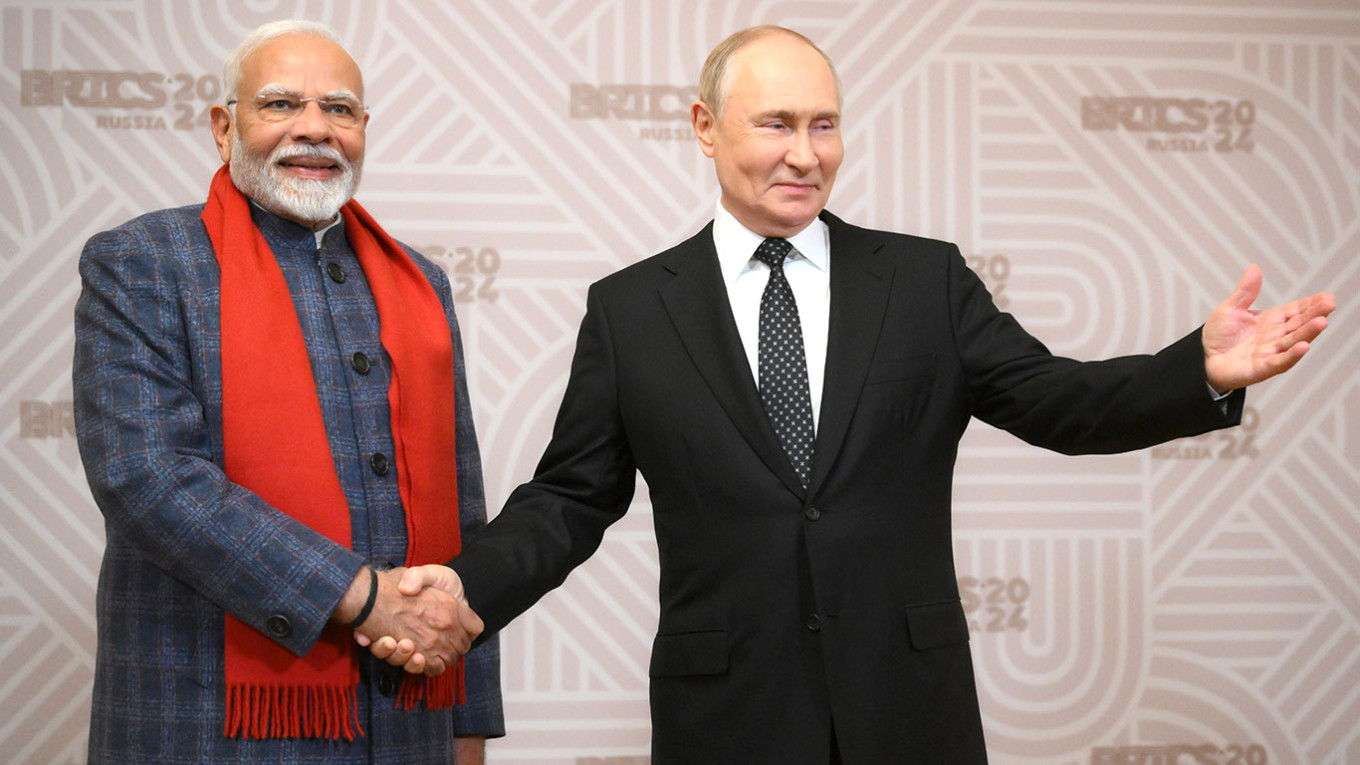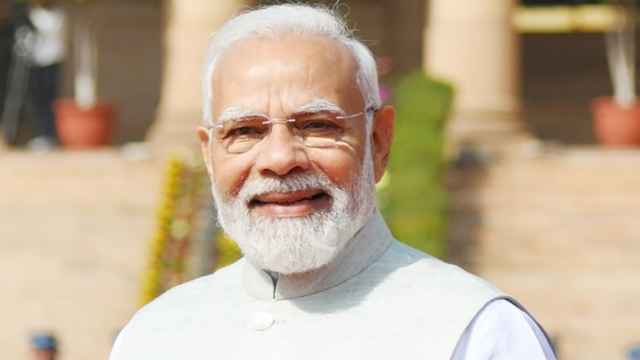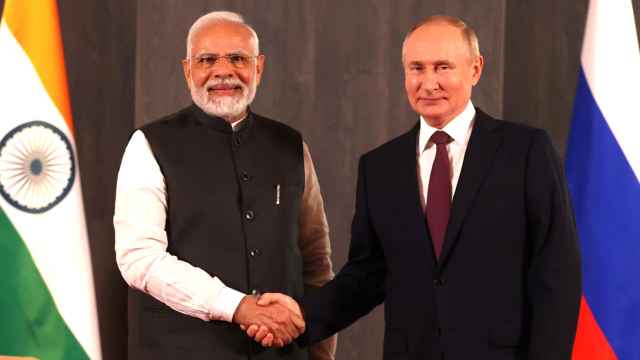On Oct. 30, 2024, the U.S. government sanctioned over 400 entities from across the world that continue doing business with Russia’s military-industrial complex. The continued presence of Turkish, Indian and Chinese companies on the U.S.'s secondary sanctions list, despite the obvious risks, indicates that Russia will continue to find willing partners in circumventing sanctions, especially in the emerging economies of the Global South.
While India has tried to maintain a balancing act between Russia and the West, the full-scale invasion of Ukraine and the ensuing sanctions and export controls against Russia have led to economic leverages for the Global South. India has not only absorbed heavily discounted Russian hydrocarbons in vast quantities but has also boosted its own exports to Moscow, especially in high-tech sectors.
Furthermore, while not exactly conglomerates, some of the Indian companies sanctioned by the U.S. and European Union and Japan in 2024 such as Lokesh Machines and Si2 Microsystems have been vendors and partners for India’s Ministry of Electronics and Information Technology and Ministry of Defence.
During a Nov. 2, press briefing, India’s Ministry of External Affairs said that while it was seeking clarification from U.S. authorities, “the sanctioned transactions are not in violation of Indian laws”. However, the ministry also stressed that India is part of and adheres to “key multilateral export control regimes”.
The government of India has also previously played a role in trying to resolve concerns around assets frozen by Western authorities to target trade between Russian and Indian entities. The measured reaction from the Indian government indicates that while New Delhi takes the matter of sanctions compliance seriously it also prioritizes its policy of strategic autonomy where it claims to be to be equally aligned with both the West and Russia.
On several occasions including against Iran and Russia, India has also refused to endorse or join G7 and Western-style unilateral sanctions. Instead, it continues to reiterate its support of UN sanctions.
India has diversified its military hardware procurement with the induction of several Western platforms, joint or licensed production. However, the development and maintenance of platforms like the Brahmos cruise missile, SU-30MKI fighter jets, and T-90 tanks necessitates close cooperation between New Delhi and Moscow.
The inability of the U.S. to persuade India’s private sector and government to resist the lure of dealing with Russia partly stems from India’s past experience in being subject to unilateral sanctions itself. In 1992 the Indian Space Research Organisation was sanctioned by the US for trying to obtain technology for building cryogenic engines from Russia’s Glavkosmos, which Washington alleged would violate the Missile Technology Control Regime (MTCR). Washington had also sanctioned India and Pakistan for conducting nuclear tests in 1998.
While India and its space program have not only coped but thrived in the following decades, India could only launch a rocket with a home-grown cryogenic engine in 2014. An argument could be made for India’s progress in the commercial space sector being stymied by the US’s if not malign then at least overly cautious interpretation of the India-Glavkosmos deal.
While India and the U.S. have come a long way with India signing a civil nuclear agreement with Washington in 2006, successfully joining the MTCR in 2016 and signing the Artemis accords in 2023, there are still strategic technologies the U.S. has been unwilling to share with New Delhi.
Russia has so far been the only country willing to lease a nuclear-powered attack submarine to the Indian Navy, which is in the process of developing its own similar vessels. While India has already built two nuclear-powered ballistic missile submarines of its home-grown Arihant class, they are poor substitutes for the more agile operations carried out by attack submarines.
However, Washington has not only managed to successfully capture market share in segments of India’s military arsenal especially in the heavy transport and attack helicopter segment, traditionally dominated by Russia and the Soviet Union. It has also successfully replaced Israel as India’s biggest unmanned aerial vehicle supplier with a $3.5bnn October 2024 deal for 31 MQ-9B drones. These breakthroughs were only possible when Washington was willing to trust India with platforms that far outshine their Russian competitors, giving Indian policymakers a good reason to diversify away from Moscow.
Following the same logic, Washington could take an approach of offering fewer sticks but more carrots to dissuade private players in the Indian economy instead of solely relying on the chilling effect of U.S. sanctions policy in recent years. Under the "chilling effect" doctrine the U.S. selectively makes examples of entities willing to do business with sanctioned countries by imposing secondary sanctions on them which serve as a warning for others.
Washington should instead undercut the alleged unscrupulous Russian networks paying a pretty penny to any Indian private entities willing to re-export Western-sanctioned goods to Russia by offering alternative legal business contracts and revenue streams to the West.
While Washington has drastically expanded its high-tech cooperation with India under the Critical and Emerging Technologies initiative since 2022, the U.S. has also been concerned over the prospect of any technology shared with New Delhi falling into Russian hands.
However, Washington has been willing to take the risk and resolve concerns with New Delhi because its primary interest in empowering India and its armed forces is to counter China which is the shared strategic and national security challenge for both New Delhi and Washington.
That said, with Russia’s full-scale invasion of Ukraine, Washington has not only become increasingly concerned with India’s closeness with Russia but has also acknowledged that India can use its influence with Moscow to help end the war. As a result, India’s status has been elevated to that of a partner for the U.S. that can affect outcomes not only in Asia but also in Europe. After all, India’s bilateral trade with the U.S. already stands at $118.3 billion for the 2024 financial year far outclassing its bilateral trade with Russia which stands at $65.6 billion during the same period. With a mix of more strategic concessions and trust Washington can further press home its advantage and weaken Moscow’s influence on New Delhi.
A Message from The Moscow Times:
Dear readers,
We are facing unprecedented challenges. Russia's Prosecutor General's Office has designated The Moscow Times as an "undesirable" organization, criminalizing our work and putting our staff at risk of prosecution. This follows our earlier unjust labeling as a "foreign agent."
These actions are direct attempts to silence independent journalism in Russia. The authorities claim our work "discredits the decisions of the Russian leadership." We see things differently: we strive to provide accurate, unbiased reporting on Russia.
We, the journalists of The Moscow Times, refuse to be silenced. But to continue our work, we need your help.
Your support, no matter how small, makes a world of difference. If you can, please support us monthly starting from just $2. It's quick to set up, and every contribution makes a significant impact.
By supporting The Moscow Times, you're defending open, independent journalism in the face of repression. Thank you for standing with us.
Remind me later.






